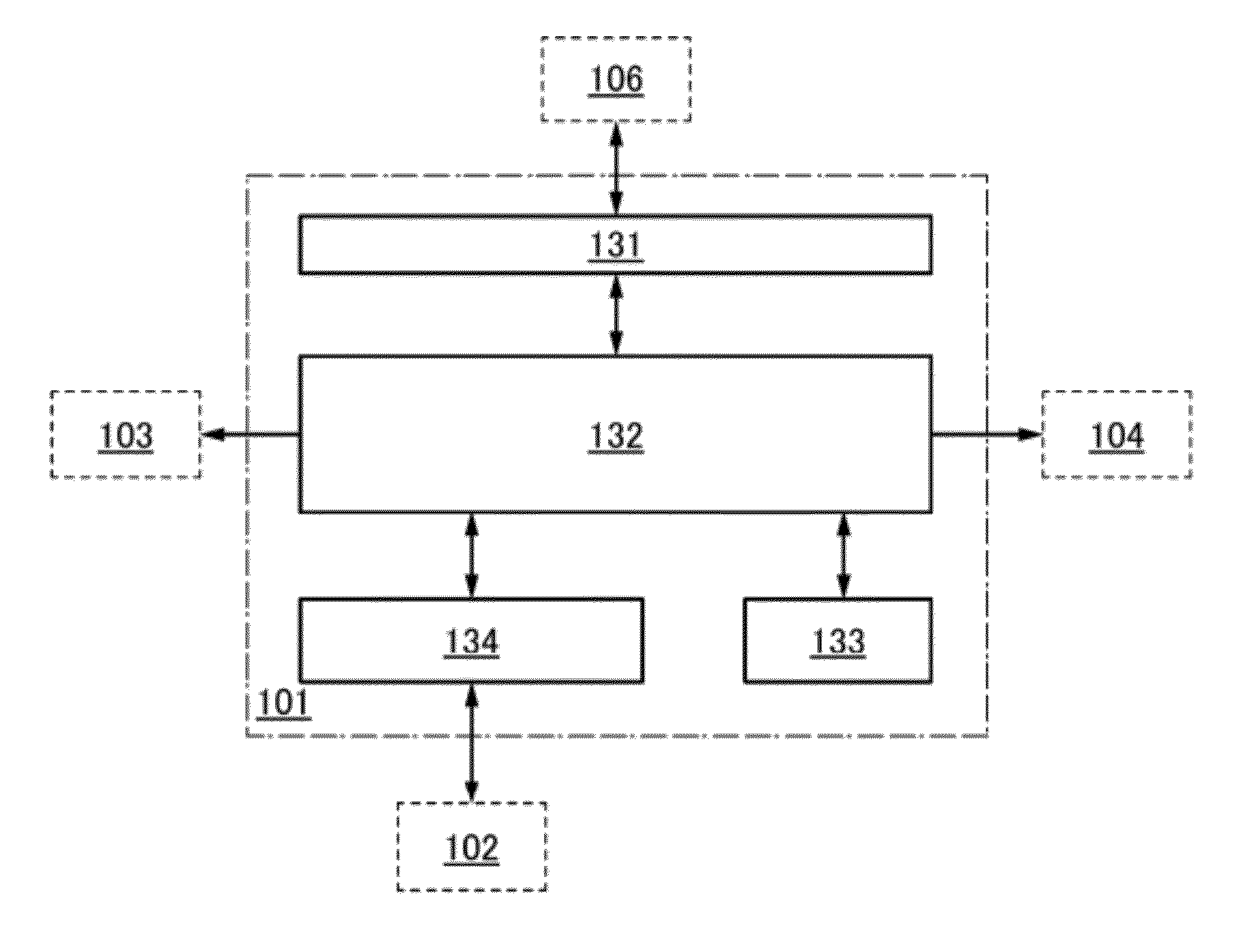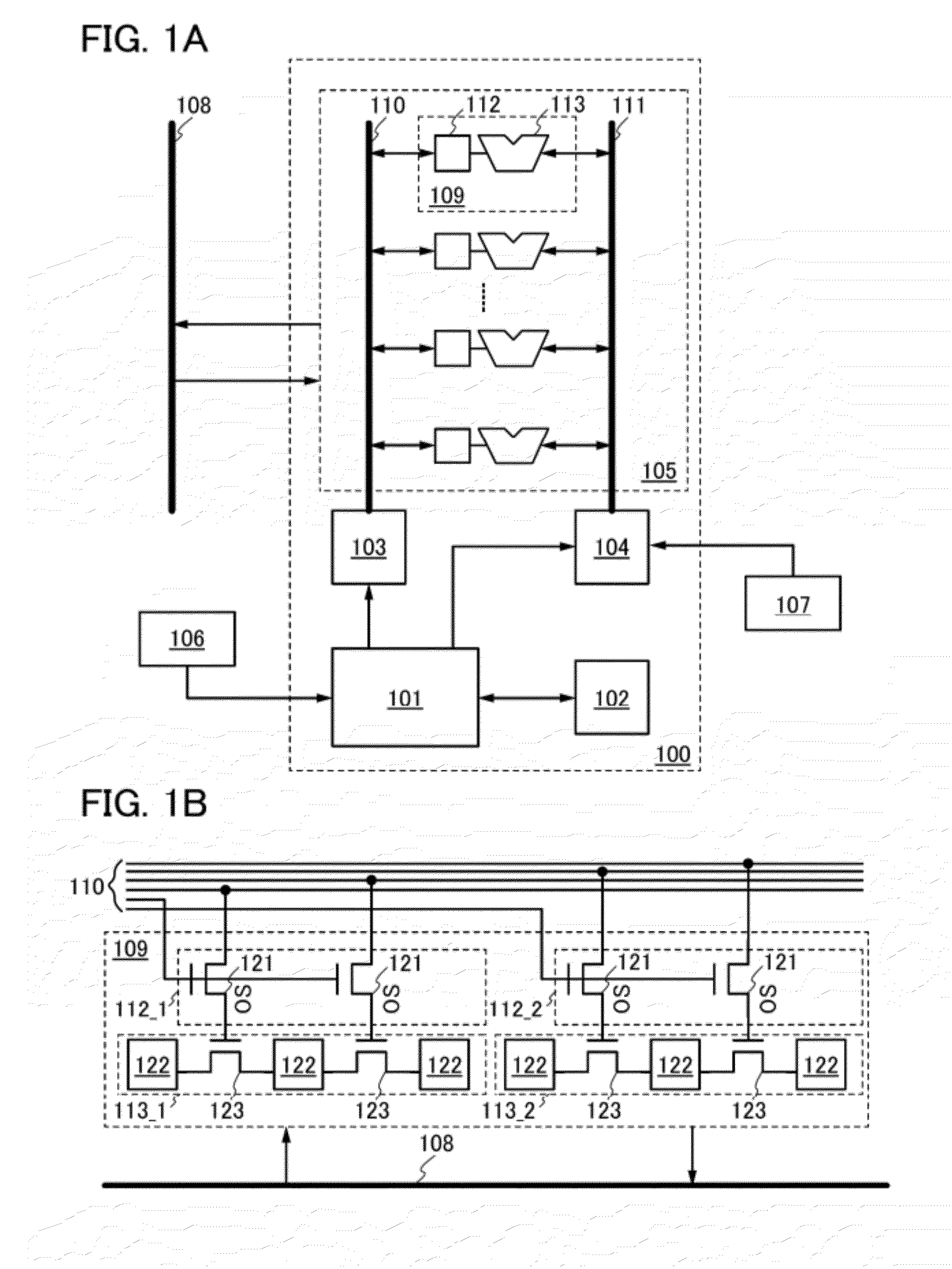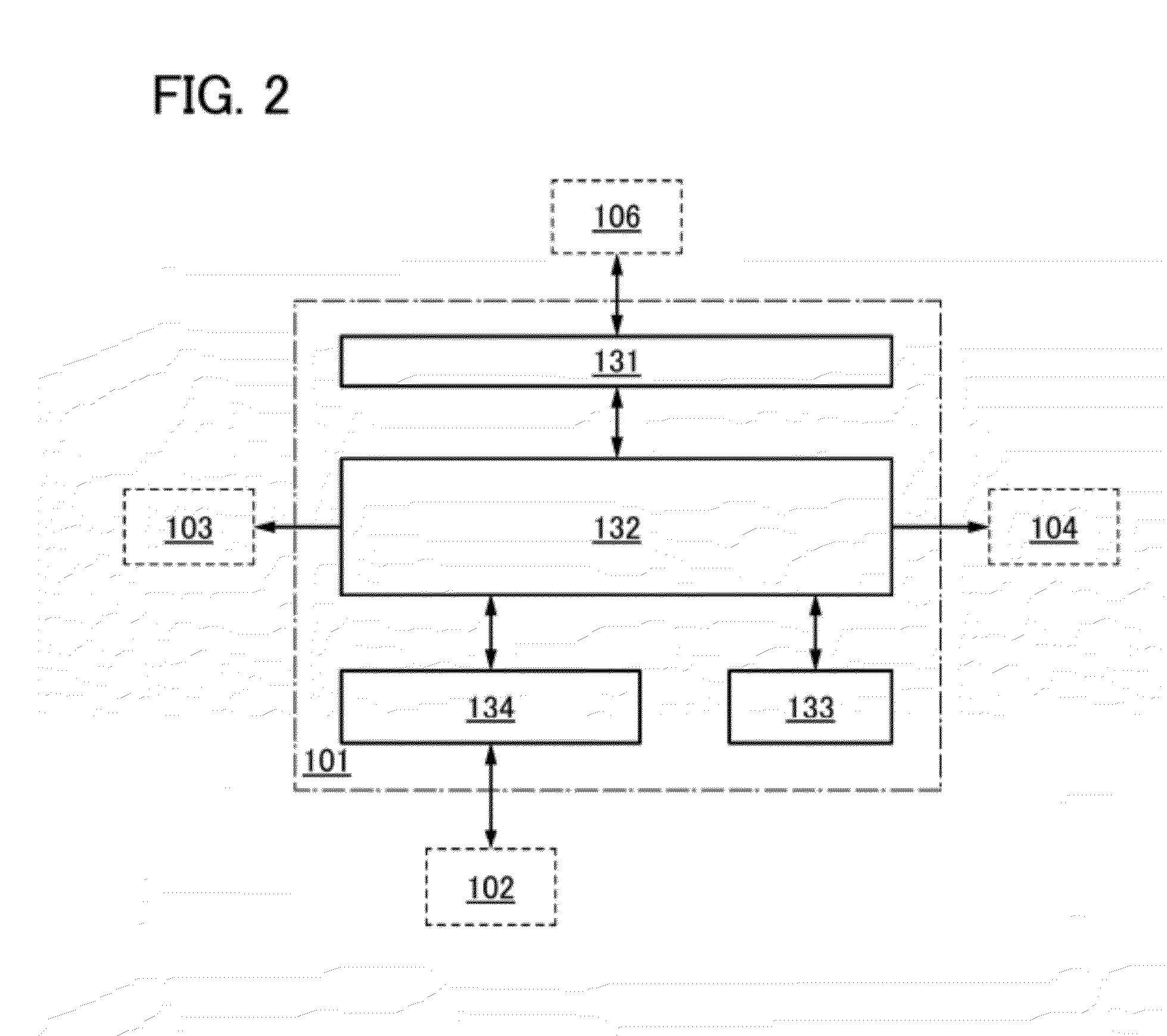Programmable logic device
a logic device and programmable logic technology, applied in logic circuits using specific components, pulse techniques, instruments, etc., can solve the problems of limited number of times of rewriting and and achieve the reduction of power consumption, the effect of improving processing speed and reducing the deterioration of memory elements
- Summary
- Abstract
- Description
- Claims
- Application Information
AI Technical Summary
Benefits of technology
Problems solved by technology
Method used
Image
Examples
embodiment 1
[0053]In this embodiment, a circuit structure of a programmable logic device according to an embodiment of the disclosed invention will be described with reference to FIGS. 1A and 1B, FIG. 2, FIG. 3, FIG. 4, and FIG. 5.
[0054]FIG. 1A illustrates a structure of a programmable logic device. A programmable logic device 100 includes an arithmetic state control circuit 101, a state memory circuit 102, a configuration changing circuit 103, a power supply control circuit 104, and an arithmetic circuit portion 105.
[0055]The arithmetic state control circuit 101 controls the configuration changing circuit 103 and the power supply control circuit 104 in accordance with an instruction signal (command signal) from a command decoder circuit 106 and data stored in the state memory circuit 102. Note that the command decoder circuit 106 analyzes a signal from the outside of the programmable logic device 100 and sends the instruction signal corresponding to the signal from the outside to the arithmeti...
embodiment 2
[0139]In this embodiment, a method for manufacturing the transistors included in the programmable logic device in Embodiment 1 will be described with reference to FIGS. 10A to 10D, FIGS. 11A and 11B, FIGS. 12A to 12C, and FIGS. 13A and 13B. As an example, a method for manufacturing the transistor 121, the transistor 171_A, and the transistor 171_B illustrated in FIG. 6C is described. Note that in FIGS. 10A to 10D, FIGS. 11A and 11B, FIGS. 12A to 12C, and FIGS. 13A and 13B, cross-sectional view taken along line A-B corresponds to a cross-sectional view of a region where the transistor 121 in which a channel formation region is formed in an oxide semiconductor, the n-channel transistor 171_A, and the p-channel transistor 171_B are formed, and a cross-sectional view taken along line C-D corresponds to a cross-sectional view of the node 172 at which the one of the source electrode and the drain electrode of the transistor 121 in which a channel formation region is formed in an oxide sem...
embodiment 3
[0274]In this embodiment, the field-effect mobility of the above-described transistor in which a channel formation region is formed in an oxide semiconductor is theoretically calculated, and the transistor characteristics are calculated from the field-effect mobility.
[0275]The actually measured field-effect mobility of an insulated gate transistor can be lower than its original mobility because of a variety of reasons; this phenomenon occurs not only in the case of using an oxide semiconductor. One of the reasons that reduce the mobility is a defect inside a semiconductor or a defect at an interface between the semiconductor and an insulating film. When a Levinson model is used, the field-effect mobility on the assumption that no defect exists inside the semiconductor can be calculated theoretically.
[0276]Assuming that the original mobility and the measured field-effect mobility of a semiconductor are μ0 and μ, respectively, and a potential barrier (such as a grain boundary) exists ...
PUM
 Login to View More
Login to View More Abstract
Description
Claims
Application Information
 Login to View More
Login to View More - R&D
- Intellectual Property
- Life Sciences
- Materials
- Tech Scout
- Unparalleled Data Quality
- Higher Quality Content
- 60% Fewer Hallucinations
Browse by: Latest US Patents, China's latest patents, Technical Efficacy Thesaurus, Application Domain, Technology Topic, Popular Technical Reports.
© 2025 PatSnap. All rights reserved.Legal|Privacy policy|Modern Slavery Act Transparency Statement|Sitemap|About US| Contact US: help@patsnap.com



